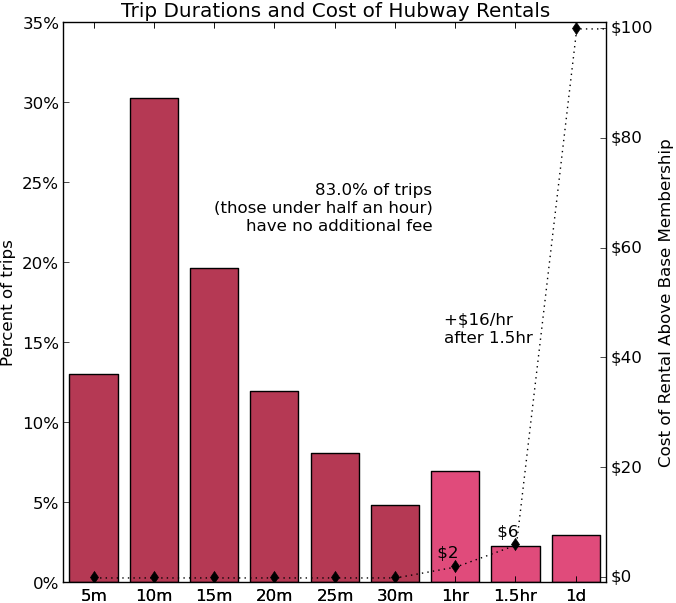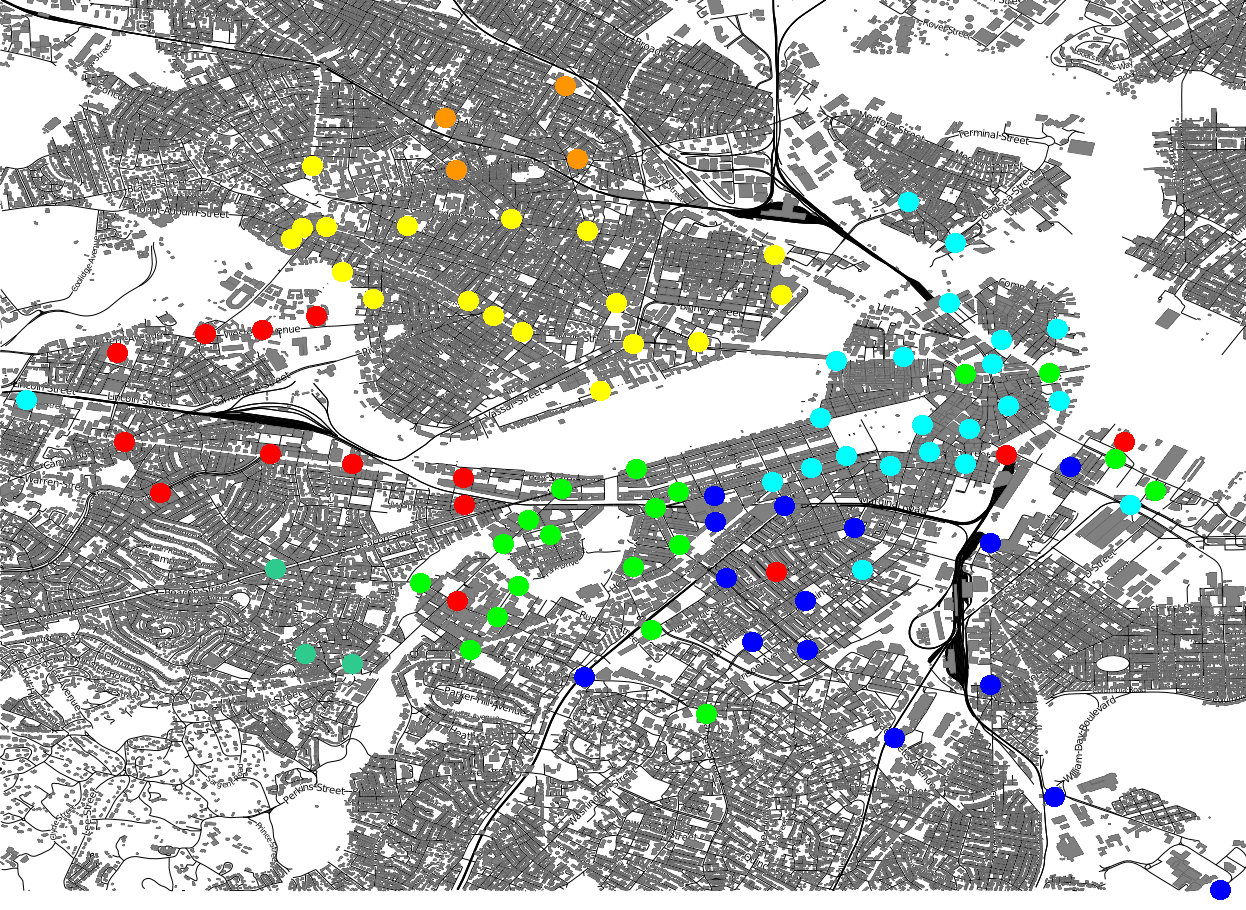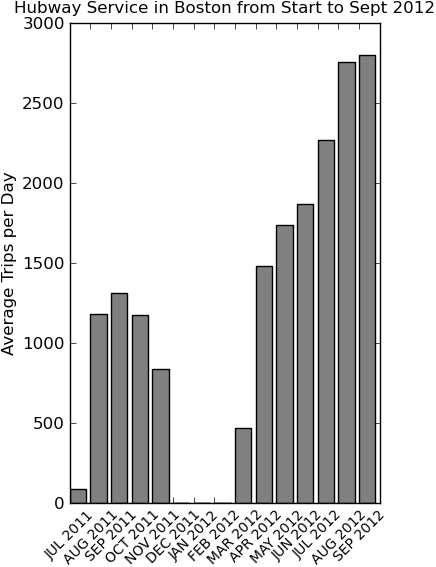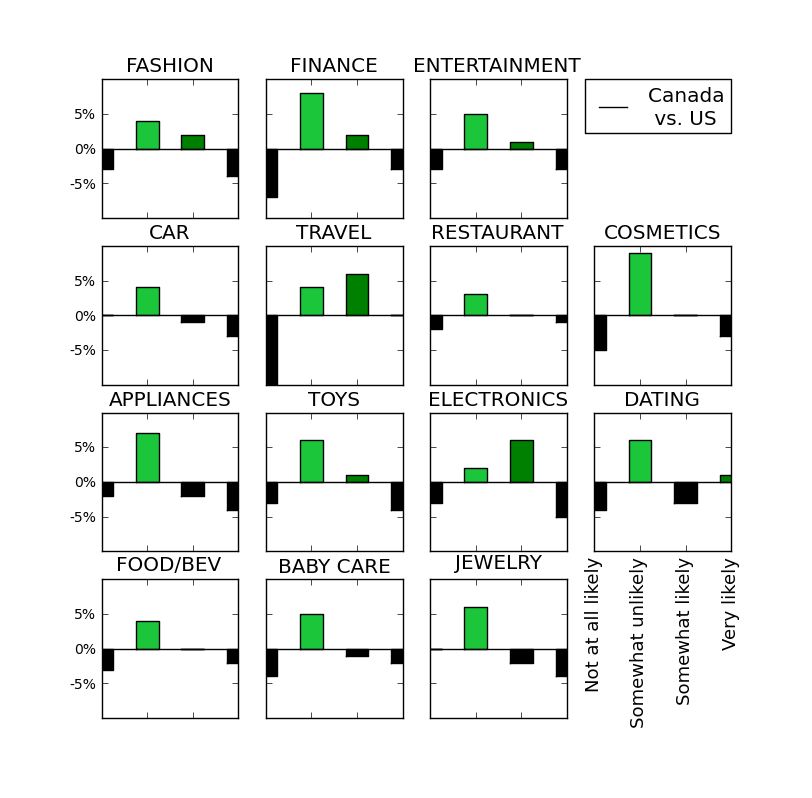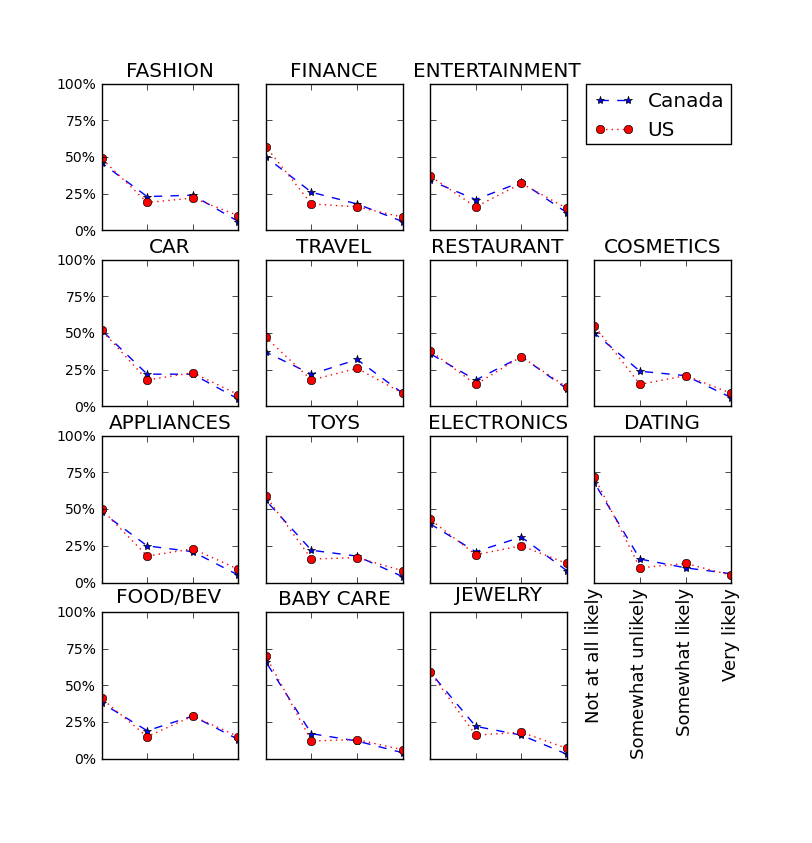The Hubway bike rental specifically targets short trips, anything under 30 minutes is part of the membership fee (either a year, 3-day or 24 membership). This seems to suit most users, with 43% finishing within 15 minutes and 62% finishing in 20 minutes.
After the first 30 minutes additional fees are incurred (with a 20% discount for registered riders). The data below shows the % of trips with different durations and the fees an unregistered rider would incurr. Note that local bike rentals are around $40/day and Hubway even recommends places to go for longer rentals.
I also saw in a previous post that some trips are being made pretty much from all stations to all other stations, which I suspect means there are trips that can’t be easily made on a Hubway bike in traffic in 30 minutes.
Note, I would like to represent this data with a cumulative bar chart and something with the cost more proportional to the number of trips that paid it.
